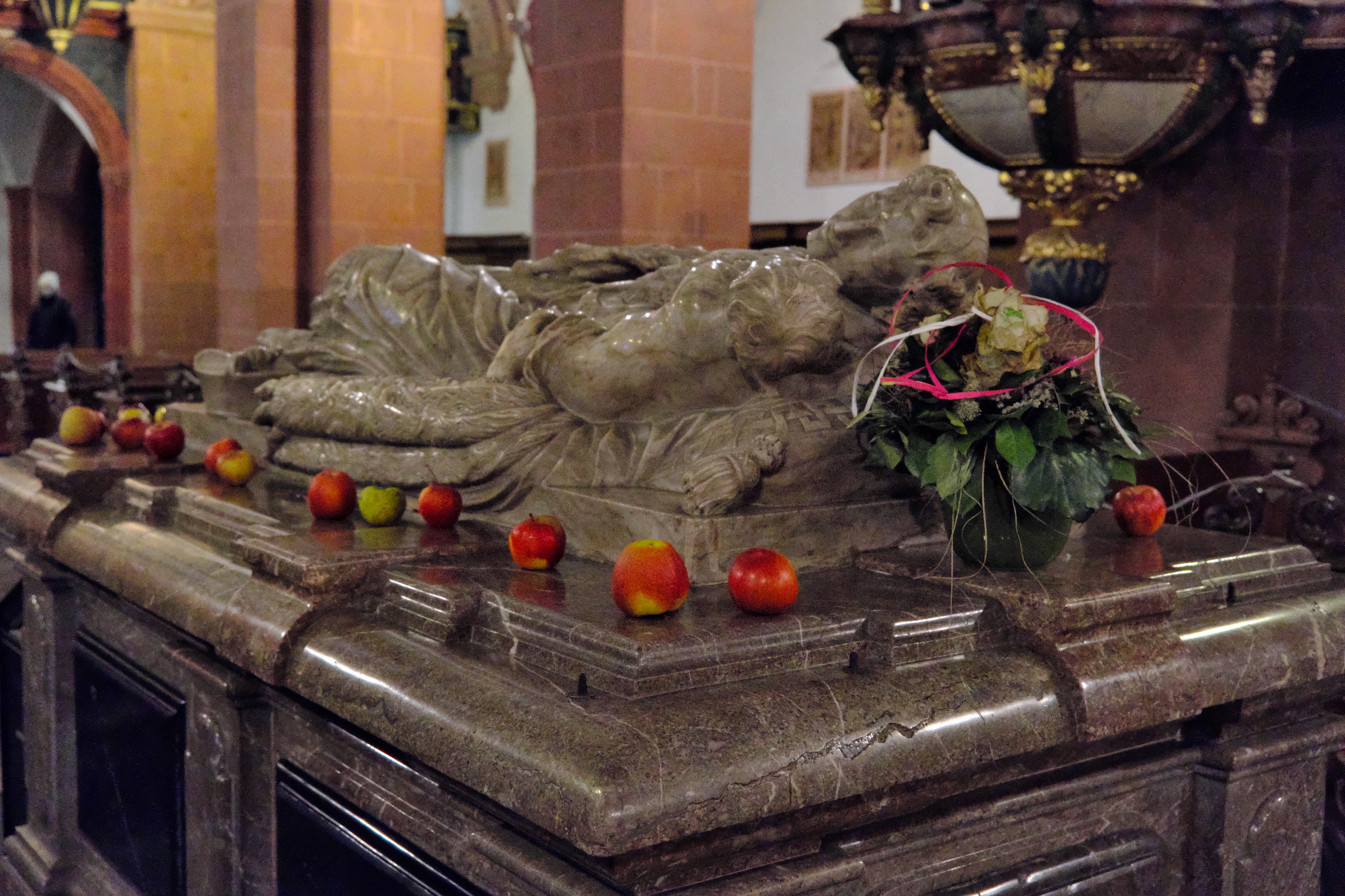Hermann was born in Cologne around 1150 as the son of an impoverished family. At the age of 12 he came to the monastery of Steinfeld to the Premonstratensian Canons Regular. He probably completed his studies in Mariengaarde near Hallum in Friesland. After his return to Steinfeld, he was ordained priest and was initially assigned to serve in the refectory (dining room). Later, the abbot entrusted him with the office of sacristan in the abbey church. In addition, he was in charge of the pastoral care of the sisters’ monasteries in the region.
Hermann Joseph from Steinfeld
Education and career
The mystic and the "apple saint"
He became particularly famous for his “mystical marriage with the Mother of God Mary”, which goes back to his deep devotion to Mary and to which he also owes his epithet Joseph. Even as a child, he is said to have been intimately devoted to Mary. According to legend, he gave an apple to the statue of Mary in Cologne’s Maria im Kapitol church. This is why he is also known as the “apple healer”. As in Cologne, fresh apples are placed on his sarcophagus in the basilica at Steinfeld Monastery.
Representations of the saint
In 1630, Anton van Dyck created a painting of the mystical marriage of Hermann Joseph to Mary for the Antwerp Brotherhood of the Unmarried, which is now in the Kunsthistorisches Museum in Vienna. Based on van Dyck’s painting, the altarpiece of the Hermann Joseph Altar in the Steinfeld Basilica was created in 1698. Other well-known sculptural images are his marble funerary sculpture from 1732 on the sarcophagus and the wooden sculpture from the beginning of the 16th century on a rear right pillar in the Steinfeld Basilica.
Veneration of the saint in Steinfeld
Hermann Josef died around 1241 while helping out on the Thursday of Easter week in the Cistercian convent of Hoven near Zülpich, where he was then immediately buried there in a place designated by himself shortly before. The Steinfeld confreres only succeeded in exhuming Hermann Josef after the intervention of the Archbishop of Cologne and transferring him to his home monastery in a triumphal procession on Whit Tuesday of the same year.
In 1728, Pope Benedict XIII consecrated an altar in honour of Blessed Hermann Joseph in the Roman Premonstratensian College and allowed Mass to be celebrated at this altar. This act was tantamount to a formal beatification for contemporaries at the time. It was onlv in a decree of the Congregation of Rites in 1958 that the official cult confirmation was made that Herman Joseph could be venerated as a saint. This “canonisation” was celebrated in 1960 in a great Octave of Celebration in Steinfeld
The saint’s day of remembrance is 21 May. The big Hermann-Josef festival with the participation of the whole region is celebrated on the Sunday before Pentecost.

